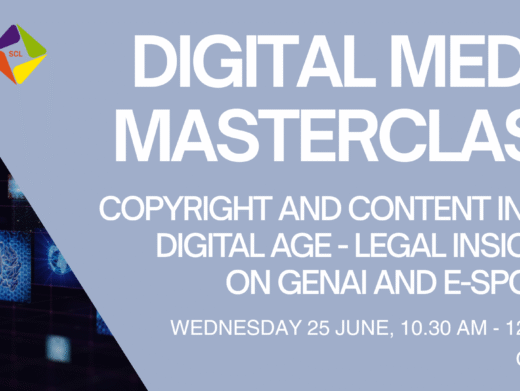Before considering the adjudication by the Advertising Standards Authority on the recent Twitter campaign involving Wayne Rooney and Jack Wilshere in more detail, it is useful to consider the background. The Committee of Advertising Practice Code states that ‘marketing communications must be obviously identifiable as such’.
Most ASA adjudications on these rules cover press and other more established forms of advertising. However, in March 2012, the ASA ruled that a Twitter campaign for Snickers bars was not in breach of the CAP Code. The campaign consisted of a series of celebrity tweets, only one of which was explicitly identified as marketing. There were four teaser tweets posted in relatively quick succession, with the aim of generating interest in the celebrities’ tweets, which were somewhat out of the ordinary. These four tweets did not refer to Snickers bars or the manufacturer Mars. Nor were they identified as marketing. A fifth ‘reveal’ tweet showed the celebrities with the chocolate bar. The complainants argued that the tweets were not identifiable as marketing as required by the CAP Code. Mars argued that only the fifth tweet was advertising. The ASA disagreed, saying the series of five tweets was an orchestrated campaign. However, it also said that, taken as a whole, it was clear enough to consumers that the series of tweets was marketing, so the first four tweets did not have to be individually labelled as advertising.
However, the ASA took a different line in the Nike case. It ruled that tweets by Wayne Rooney and Jack Wilshere breached the CAP Code rules on recognition of advertising. The Nike advertisements were tweets setting out the footballers’ resolutions for 2012. Rooney and Wilshere posted personal as well as advertiser-sponsored messages from their Twitter accounts. Nike pointed out that the tweets included the Nike hashtag #makeitcount and the URL www.go.nike.me/makeitcount. It also said that the footballers and their clubs were widely known to be sponsored by Nike. However, the ASA noted that the ‘Make it count’ campaign had launched around the same time that the tweets were posted, and considered that consumers might not recognise the campaign.
Even though the tweets included links to a Nike web site and so some readers would have realised that the tweets’ purpose was to promote Nike, the ASA considered that it would not be obvious to all readers that the tweet was marketing. Therefore, Nike has the dubious honour of being the first UK organisation to have its Twitter campaign banned by the ASA.
As a follow-up to the Nike adjudication, CAP has issued guidance http://www.cap.org.uk/Media-Centre/2012/The-Rooney-makeitcountgonike-tweet.aspx for marketers on ensuring consumers recognise advertising. CAP says that as well as referring to Nike more closely, the tweets could have used the hashtags #ad or #spon. It also points out that some media owners are developing their own methods of identifying the advertising they carry. For example, advertisements on Virgin Media’s electronic programme guide are identified by a yellow circle with an A in the middle. However, CAP makes the point that advertisers need to educate their customers about the meaning of these symbols. Once a symbol is well-established in consumers’ minds it can offer a simple and effective way to identify advertising.
CAP advises marketers to consider the following key questions (and this applies to more conventional advertising such as press advertising as well as to online advertising such as using Twitter):
· Will the audience quickly recognise the content as an advertisement because of the context (for example, because it appears on the advertiser’s own web site)?
· Can the audience easily distinguish advertising from editorial content in the medium (for example, because they recognise differences in style)?
· Are advertisements presented in a separate space that audiences expect to contain advertising (for example, television advertising breaks).
If not, marketers should consider taking special steps to ensure that the audience is in no doubt that the content is an advertisement.
CAP also points to the recent guidance it provided on advergames (electronic games that are used to advertise a product, brand or organisation, typically accessible on social media sites, organisations’ own web sites and as mobile phone apps), which among other things, covers recognition.
As well as the CAP Code, marketers need to be aware of the Consumer Protection from Unfair Trading Regulations 2008, which prohibit unfair commercial practices generally. In particular, sch 1 prohibits using editorial content in the media to promote a product where a trader has paid for the promotion without making that clear in the content or by images or sounds clearly identifiable by the consumer (advertorial). In addition, it prohibits ‘falsely claiming or creating the impression that the trader is not acting for purposes relating to his trade, business, craft or profession, or falsely representing himself as a consumer’. The Office of Fair Trading took enforcement action under the Regulations for the latter in December 2010. It required Handpicked Media, a commercial blogging network, to provide undertakings that promotional comments which have been paid for must be clearly identified as such (see http://www.oft.gov.uk/OFTwork/consumer-enforcement/consumer-enforcement-completed/handpicked_media/). The OFT has produced guidance on complying with the Regulations.
The Internet Advertising Bureau and ISBA have produced joint guidelines on the payment of editorial content to promote brands within social media. For Twitter activity, the guidelines suggest using the hashtag #ad within the tweet as a practical way, within the confines of 140 characters, of alerting consumers to the fact that the tweet is marketing.
It may be tempting to use celebrity endorsement during events such as Euro 2012 and the Olympics, but quite apart from the separate issues of ambush marketing, this ASA ruling reminds us that marketers must follow the rules on making clear such endorsements are paid for.
Helen Hart is a freelance legal journalist and editor. She has previously worked at Practical Law Company, Stevens & Bolton LLP, Palm, Centrica and Allen & Overy LLP.




